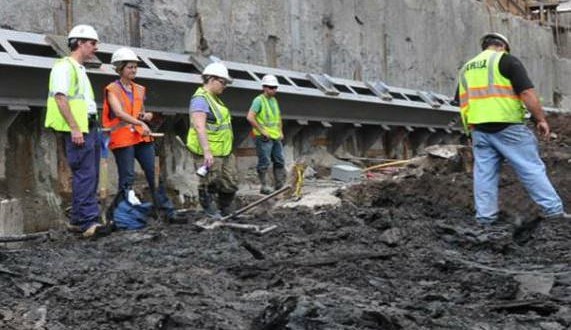A mystery ship unearthed during construction of the new World Trade Center site isn’t so much of a mystery anymore. A new study based on analysis of tree rings in its wood reveals that the ship likely got built in 1773 in Philadelphia—and with the same white oak used to build parts of Independence Hall, Live Science reports.
“Key to the analysis was wood sampled from Philadelphia’s Independence Hall two decades earlier by Lamont tree-ring scientist Ed Cook,” the university said in a news release this week.
“It turns out that growth rings still visible in the building’s timbers matched those from the World Trade Center ship, suggesting that the wood used in both structures came from the same region.”
Trees’ rings record the climate in which they lived, creating a hybrid birth certificate-fingerprint that scientists, in this case, used to match the beams of the unearthed ship to the same wood used to construct Independence Hall.
The ship has been tentatively identified as a Hudson River Sloop.
Likely built in Philadelphia, the vessel was designed to carry passengers and cargo over shallow, rocky water, and was probably in service for 20 to 30 years.
Scientists say it probably spent time in the Caribbean, too, because its frame was riddled with tiny holes, a trademark of shipworms native to warm, salty waters.
It was eventually buried by trash and landfill as the lower Manhattan coast inched westward, scientists said.
“By 1818, the ship would have vanished from view completely until the terrorist attacks on Sept. 11, 2001 set in motion the events leading to the World Trade Center’s excavation and rebirth,” the university said.
Among the items found on the ship were American-made musket balls and an array of munitions likely used to fend off pirates, oysters growing on the hull, and a pewter button stamped with the number “52” that may have belonged to a soldier from Britain’s 52nd Regiment of Foot.
Agencies/Canadajournal
 Canada Journal – News of the World Articles and videos to bring you the biggest Canadian news stories from across the country every day
Canada Journal – News of the World Articles and videos to bring you the biggest Canadian news stories from across the country every day



